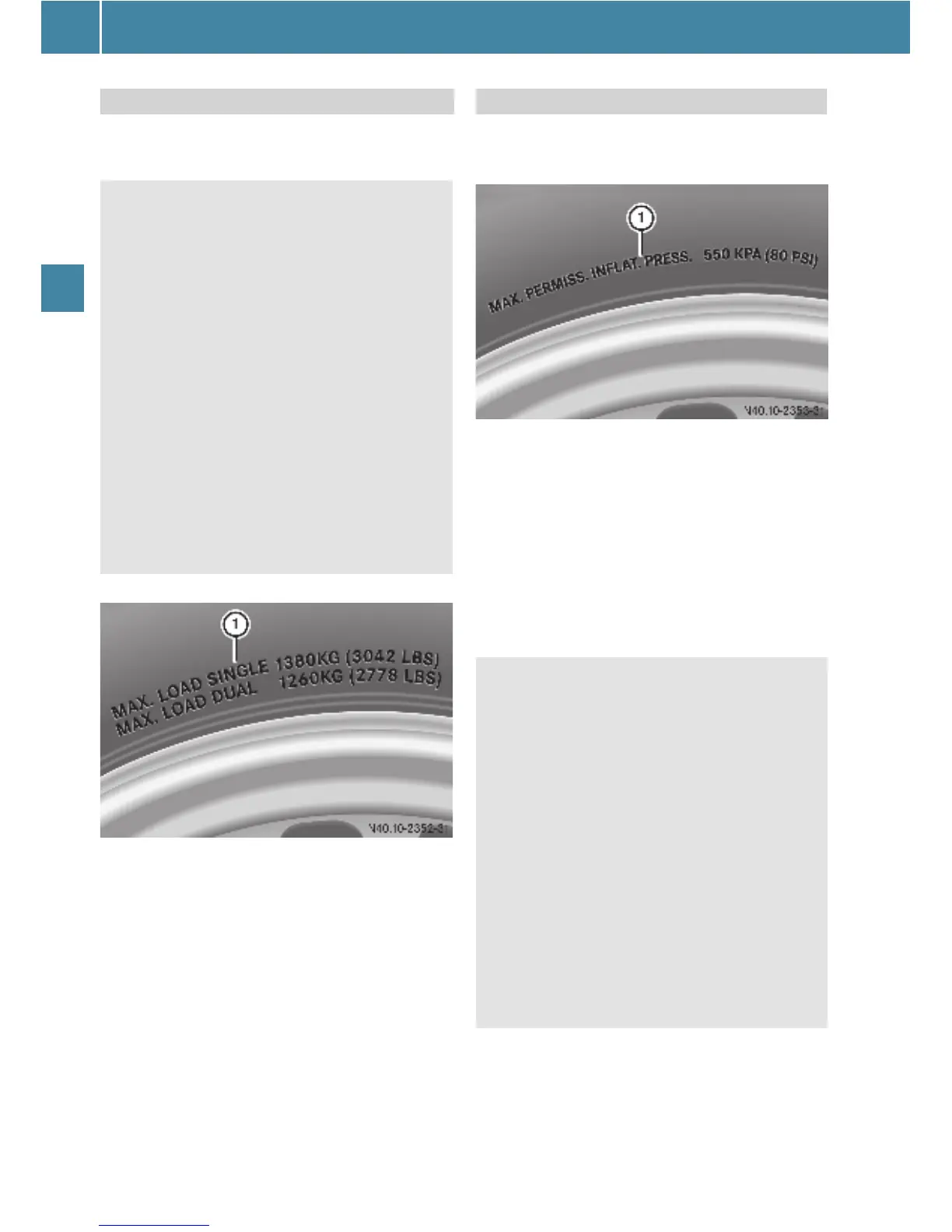Tires and wheels
186
Operation
The maximum tire load is the maximum
weight the tires are designed to support.
1 Maximum tire load rating
i For illustrative purposes only. The actual
data on tires is specific to each vehicle and may
vary from the data shown in the following illustra-
tion.
For more information on tire load rating,
refer to "Tire size designation, load and
speed rating" (
e page 183).
For information on calculating total and
cargo load capacities, refer to "Tire and
loading information" (e page 170).
This is the maximum permissible tire infla-
tion pressure for the tire.
1 Maximum permissible tire inflation
pressure
i For illustrative purposes only. The actual
data on tires is specific to each vehicle and may
vary from the data shown in the following illustra-
tion.
Always follow the recommended tire infla-
tion pressure (
e page 174) for proper tire
inflation.
Maximum tire load
G Warning
Do not overload the tires by exceeding the
specified load limit as indicated on the tire
and loading information label on the driver's
door B-pillar. Overloading the tires can over-
heat them, possibly causing a blowout. Over-
loading the tires can also result in handling or
steering problems, or brake failure.
Never overload them.
The vehicle maximum load on the tire must
not exceed the load carrying capacity of the
tire on your vehicle. You will not exceed the
tire's load carrying capacity if you adhere to
the loading conditions, tire size and cold tire
inflation pressures specified on the tire and
loading information label.
Maximum tire inflation pressure
G Warning
Never exceed the maximum tire inflation
pressure. Follow recommended tire inflation
pressures.
Do not underinflate tires. Underinflated tires
wear excessively and/or unevenly, adversely
affect handling and fuel economy, and are
more likely to fail from being overheated.
Do not overinflate tires. Overinflated tires can
adversely affect handling and ride comfort,
wear unevenly, increase stopping distance,
and result in sudden deflation (blowout) be-
cause they are more likely to become punc-
tured or damaged by road debris, potholes,
etc.
